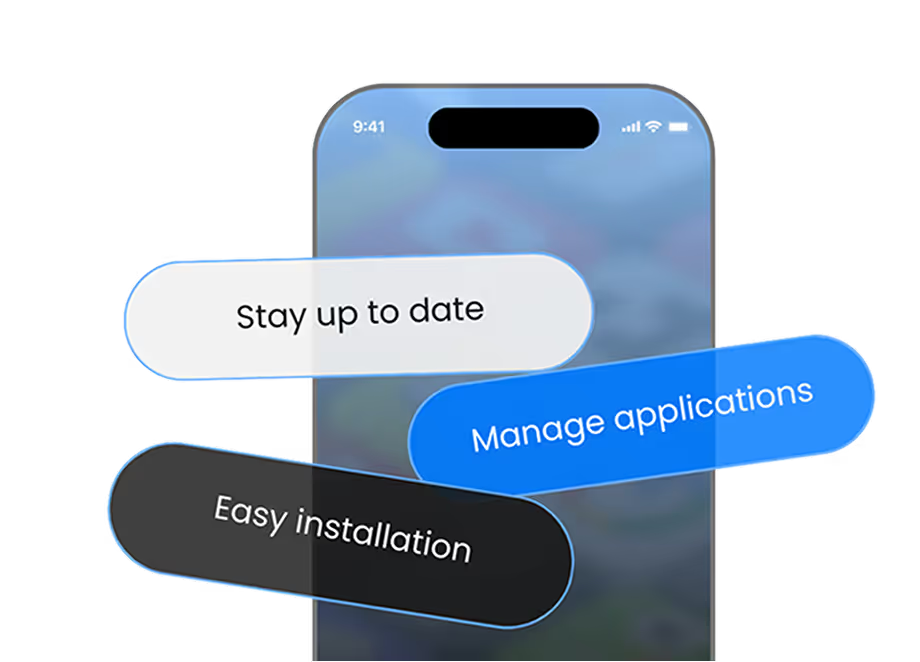
High-performing mobile teams don’t just build fast, they deliver faster, fix smarter, and scale smoother. In an era where user expectations change overnight and app store approvals can slow you down for days, having the ability to update your app instantly is a massive competitive edge.
That’s where CodePush comes in.
Originally developed by Microsoft, CodePush allows developers to push live updates to React Native apps without resubmitting to the App Store or Play Store. And with AppsOnAir CodePush, teams get the same flexibility, enhanced with analytics, collaboration tools, and seamless integration for enterprise-grade workflows.
Let’s go behind the scenes of a high-performing app team and uncover how CodePush adoption reshapes how they work, saving time, reducing release friction, and elevating user satisfaction.
The Traditional App Update Bottleneck
For most mobile teams, updates follow a familiar, and frustrating, pattern:
- Developer fixes a bug or adds a small feature.
- The new version is bundled and sent for review.
- Apple or Google takes anywhere from hours to days to approve.
- Users may or may not install the update immediately.
- Meanwhile, bugs persist, and support tickets pile up.
This slow loop kills agility.
By the time a hotfix reaches production, the issue has already affected thousands of users.
CodePush changes that. It lets teams deploy updates directly to the app over-the-air, skipping the store approval entirely.
What is CodePush (and How It Works)
At its core, CodePush enables developers to deliver JavaScript (and asset) updates to React Native apps instantly.Instead of waiting for users to download a new version from the store, CodePush syncs updates the next time the app launches or resumes.
With AppsOnAir CodePush, this process becomes even more seamless:
- Push updates through a web dashboard or CI/CD pipeline
- Roll back or re-deploy instantly if something breaks.
- Track version adoption and user impact in real time.
For teams, this means continuous delivery for mobile apps, not just web apps.
Inside a High-Performing App Team: How CodePush Transforms the Workflow
Let’s break down how CodePush adoption changes the game at every stage of development.
1. Faster Hotfixes = Fewer Crashes and Happier Users
A high-performing app team never lets bugs linger.
With CodePush, they can identify an issue and deploy a fix in minutes instead of waiting for a new version rollout.
For example, an e-commerce app notices a checkout bug during a weekend flash sale. Instead of waiting for Apple’s review, they push the fix instantly through CodePush, saving potentially hundreds of transactions in lost revenue.
With AppsOnAir’s real-time update control, these fixes can even be targeted per environment, region, or platform.
2. Iteration Speed That Matches User Expectations
In 2025, the top mobile teams iterate multiple times a day.
They A/B test layouts, refine flows, and respond to user data in real time.
With CodePush, they can ship new UI variants or content updates without requiring a new build.
This agility allows teams to experiment safely and learn faster — a cornerstone of high-performing engineering culture.
AppsOnAir enhances this by offering multi-environment support, so dev, staging, and production updates can be managed seamlessly.
3. Smoother Collaboration Between Devs, QA, and Product Teams
Without CodePush, every update triggers chaos, multiple builds, new releases, and QA restarts.
With AppsOnAir CodePush, updates are centralized.
- Developers push directly from their CI/CD.
- QA teams get instant access to the latest code.
- Product managers can monitor update rollout progress in one dashboard.
This reduces handoffs and accelerates internal feedback, leading to tighter collaboration and fewer release bottlenecks.
4. Reduced App Store Dependency
Let’s face it, app store approvals are unpredictable.
A small policy update or reviewer delay can stall critical fixes.
CodePush gives teams release independence.
You still comply with store policies for binary changes, but for everything else — bug fixes, content, styling tweaks, you’re in full control.
That’s a strategic advantage for startups and enterprises alike, especially during peak periods like BFCM, product launches, or new feature rollouts.
5. Cost Savings Through Operational Efficiency
Every developer knows the cost of context switching.
Waiting on reviews, re-uploading builds, or repackaging binaries eats into productivity.
By using CodePush, teams eliminate unnecessary release overheads.
Faster deployment cycles mean fewer developer hours wasted on logistics — and more focus on building new features.
For companies managing multiple apps, the savings compound quickly, often reducing release management time by up to 50%.
6. Controlled Rollouts and Instant Rollbacks
Even high-performing teams make mistakes — but what defines them is how fast they recover.
With AppsOnAir CodePush, you can:
- Roll out updates to a percentage of users for A/B testing.
- Pause or revert updates instantly if something goes wrong.
- Deploy region or version-specific patches.
This flexibility makes CodePush not just a speed tool but a safety net, protecting teams from large-scale production mishaps.
7. Real Analytics That Drive Real Decisions
Shipping fast is great. Knowing what your updates actually achieve is better.
AppsOnAir’s CodePush integration adds deep analytics, tracking update adoption rates, platform performance, and user engagement post-update.
Teams can measure how quickly users move to the latest version and correlate updates with metrics like crash reduction or session retention.
This data-driven approach helps teams close the loop, releasing not just faster, but smarter.
8. Enterprise-Grade Scalability with AppsOnAir
While CodePush is powerful, managing it at scale can get tricky, multiple apps, environments, and teams mean higher complexity.
AppsOnAir CodePush brings enterprise readiness:
- Multi-app and multi-environment support
- Team roles and permissions
- CI/CD integration for automated deployment
- Unified monitoring and version tracking
Whether it’s a fintech app with 5M users or a startup testing their MVP, the platform ensures you can deploy instantly and confidently across your ecosystem.
9. Real-World Impact: A Case Example
A fintech startup used to release updates every two weeks — and every update required QA cycles, store submissions, and user updates.
After adopting AppsOnAir CodePush, their workflow transformed:
- Hotfixes deployed in under 15 minutes.
- Weekly releases reduced to one every three days.
- QA time dropped by 40%.
- Customer satisfaction scores increased by 20%.
Read More - How In-App Feedback Reduces QA Cycles by 40%
For them, CodePush wasn’t just a tool, it became their operational backbone for continuous improvement.
Conclusion
A high-performing mobile app team thrives on speed, control, and adaptability.
And in today’s market, where users expect instant fixes and constant evolution, relying solely on traditional app store updates isn’t enough.
CodePush, especially with AppsOnAir’s enhanced platform, empowers teams to deliver continuous updates, collaborate effortlessly, and stay in complete control of their app lifecycle, from development to production.
In short, it’s the missing link between DevOps agility and mobile app delivery.















